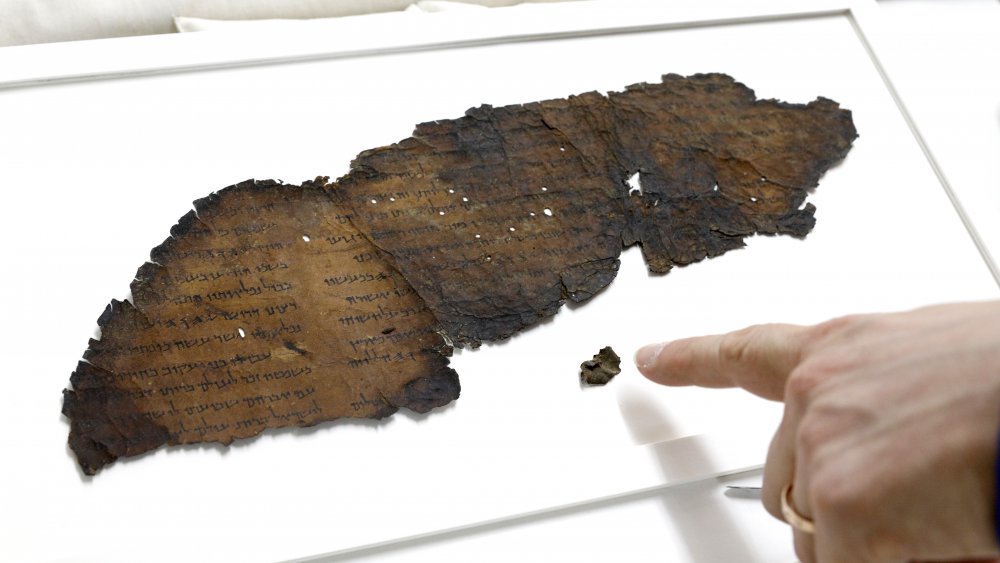Museum Of The Bible's Dead Sea Scroll Fragments Are Forgeries
First unearthed by Bedouin shepherds in the 1940s, according to Ars Technica, the Dead Sea Scrolls are centuries-old Hebrew texts that were stashed in caves located near the Dead Sea. Historians suspect that a Jewish sect called the Essenes hid the texts to protect them when Romans sacked a nearby settlement called Qumran in 73 CE. The Dead Sea Scrolls yielded vital insights about the era of ancient rabbinic Judaism that preceded Christianity, via the Guardian, and people have spent millions to acquire these sacred scraps of history.
According to William Kendo, a seller in Jerusalem, Hobby Lobby president and billionaire evangelical Steve Green offered to pay him $40 million for just seven fragments of scroll. When Green's Museum of the Bible in Washington D.C.opened in 2017, it supposedly showcased 16 pieces of the Dead Sea Scrolls. Unfortunately, "up to 90% of the 75 fragments sold since 2002 could be fakes," according to one scholar.
And in the case of the Museum of the Bible, it turned out to be 100 percent.
A dead sea of lies
An honest-to-goodness Dead Sea Scroll is typically written on a mix of parchment and leather made from goat, sheep, or cattle, per Ars Technica. But the scroll scraps featured at the Museum of the Bible were neither honest nor good. In 2018, an investigation by Germany's Federal Institute for Materials Research revealed that five of its fragments were forgeries. So the museum enlisted Art Fraud Insights to examine all 16. Lo and behold, none of alleged Dead Seas scroll fragments hold water. They didn't contain parchment, instead consisting of ancient leather that may have come from Roman shoes.
Much like that deceptive shoe leather, the Museum of the Bible started off on the wrong foot. Months before it opened, museum founder and Hobby Lobby president Steve Green was embroiled in an international scandal involving stolen Iraqi relics. As NPR details, Hobby Lobby got slapped with a $3 million fine for buying 5,500 ancient Mesopotamian artifacts that had been looted from a Sumerian city called Irisagrig. Green claimed that no stolen relics made their way into the Museum of the Bible. However, a bogus bible did. It allegedly belonged to a collection of miniature "lunar bibles” that were taken to space during a 1971 NASA mission, but the serial number showed otherwise.
As with the Dead Sea Scrolls, visitors were promised the moon. Instead, they got one small misstep for a museum, one giant leap of misplaced faith.

